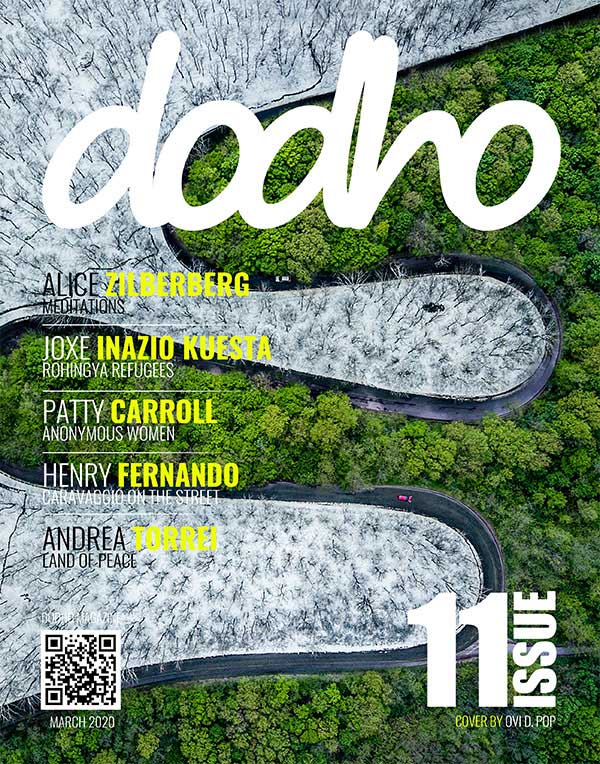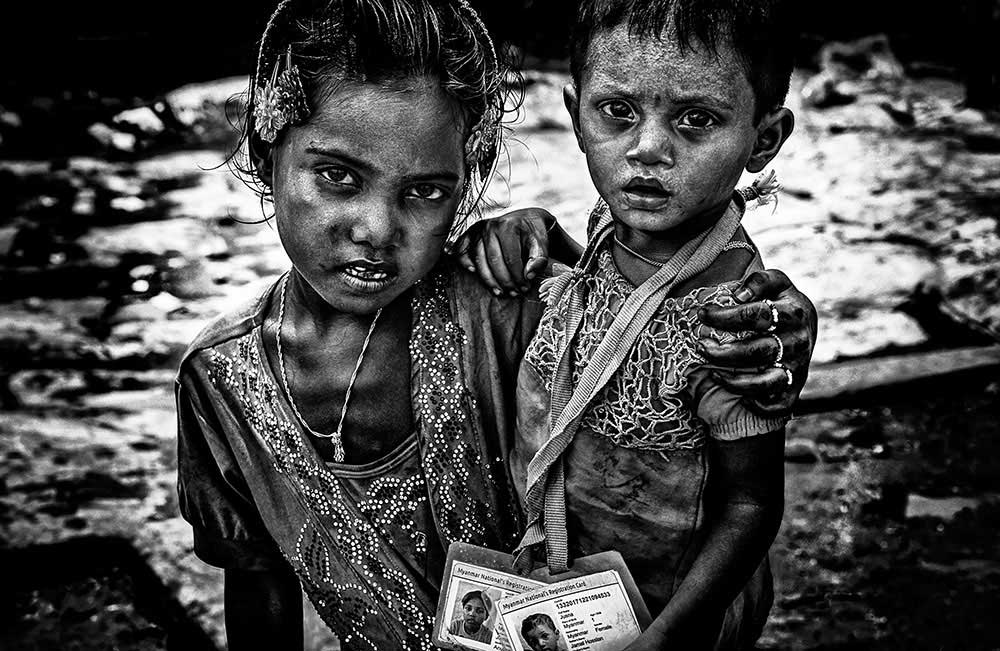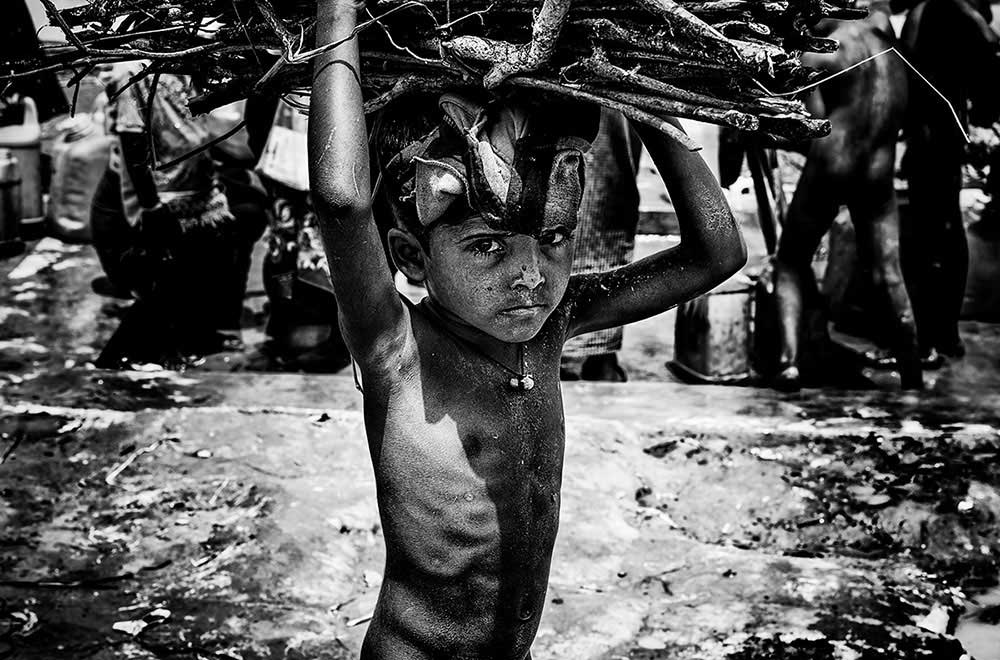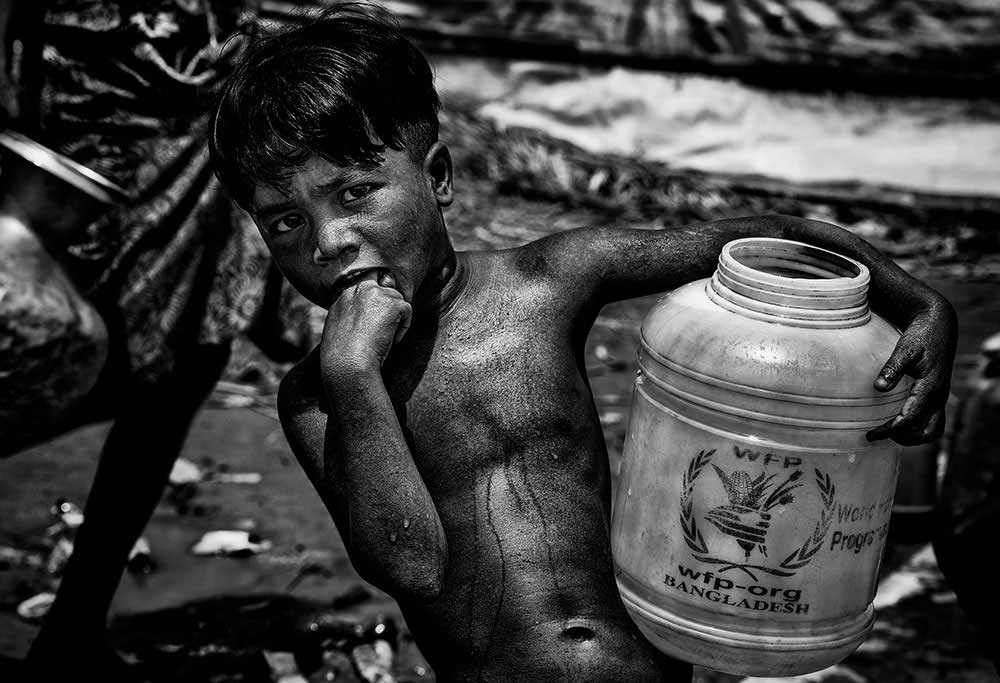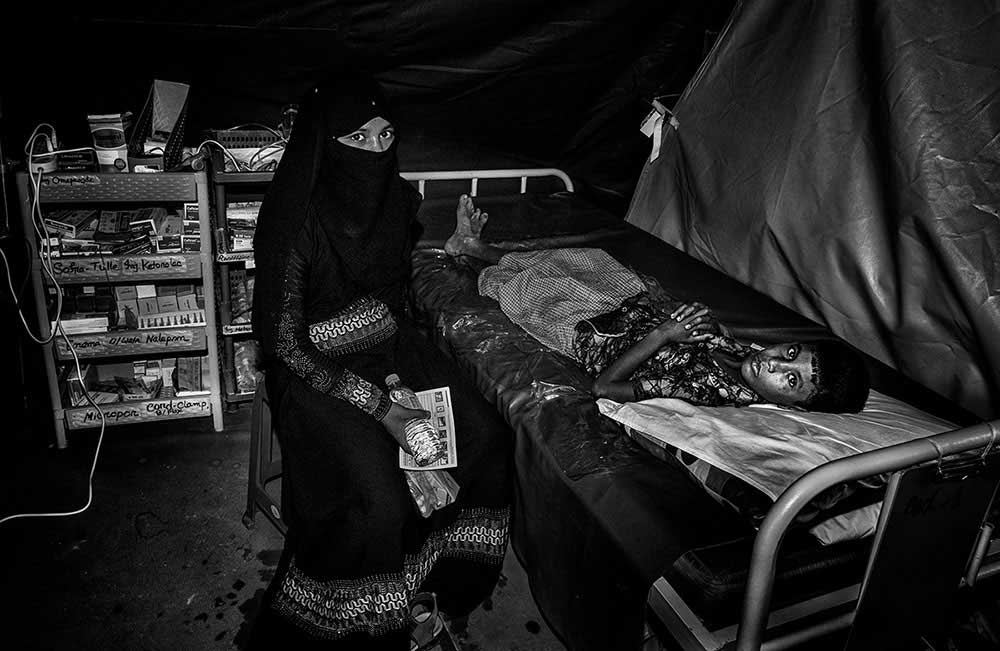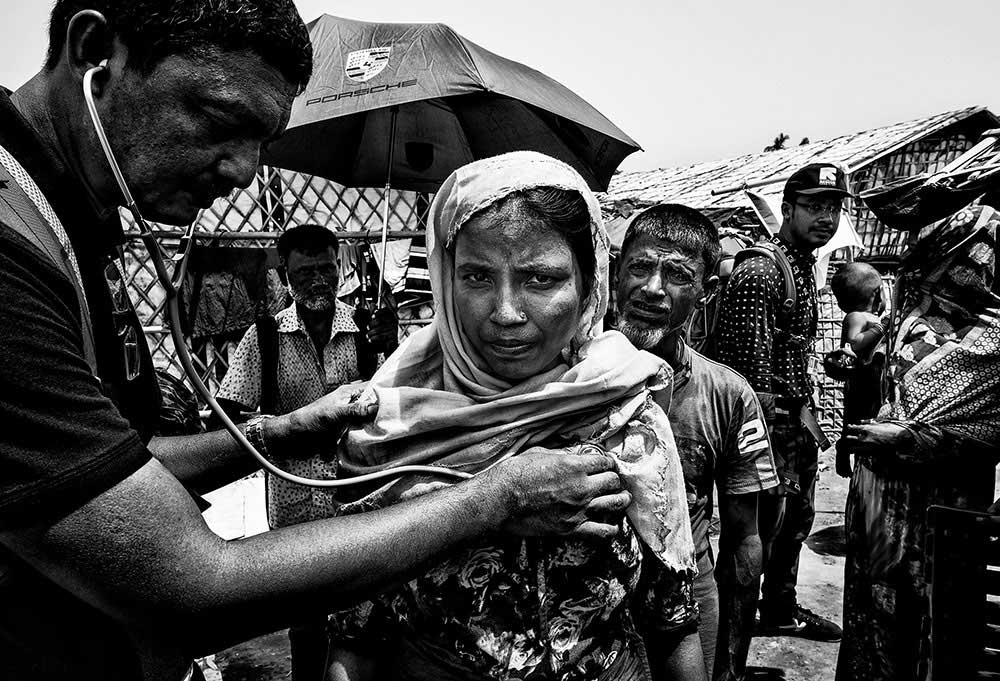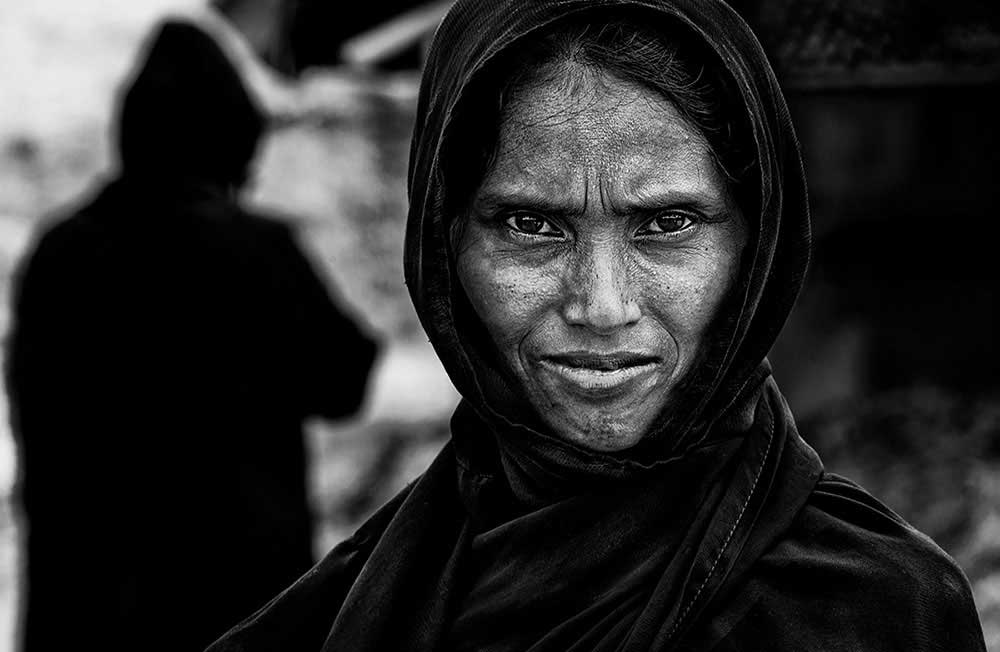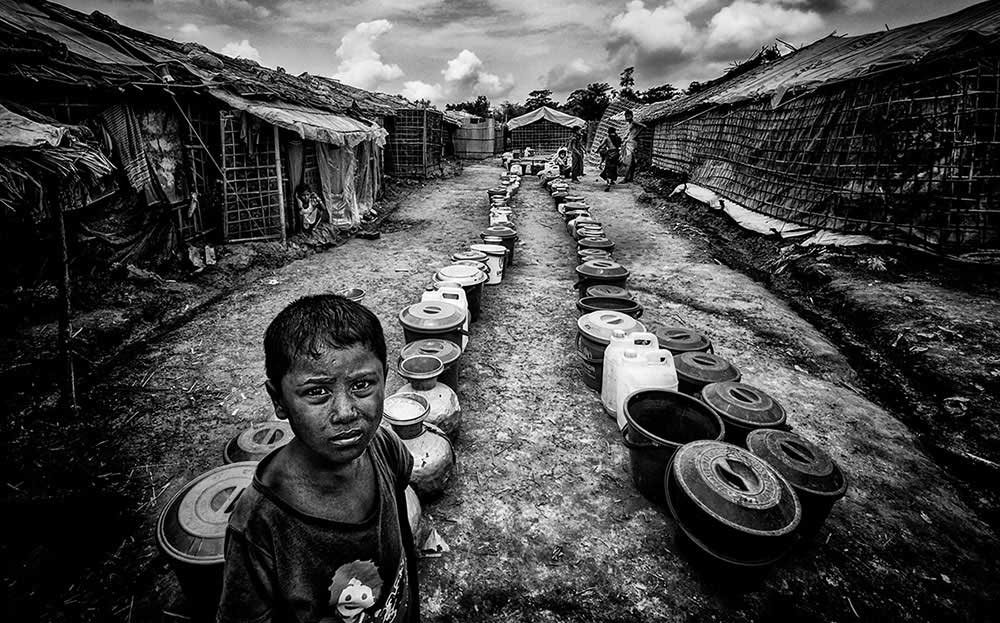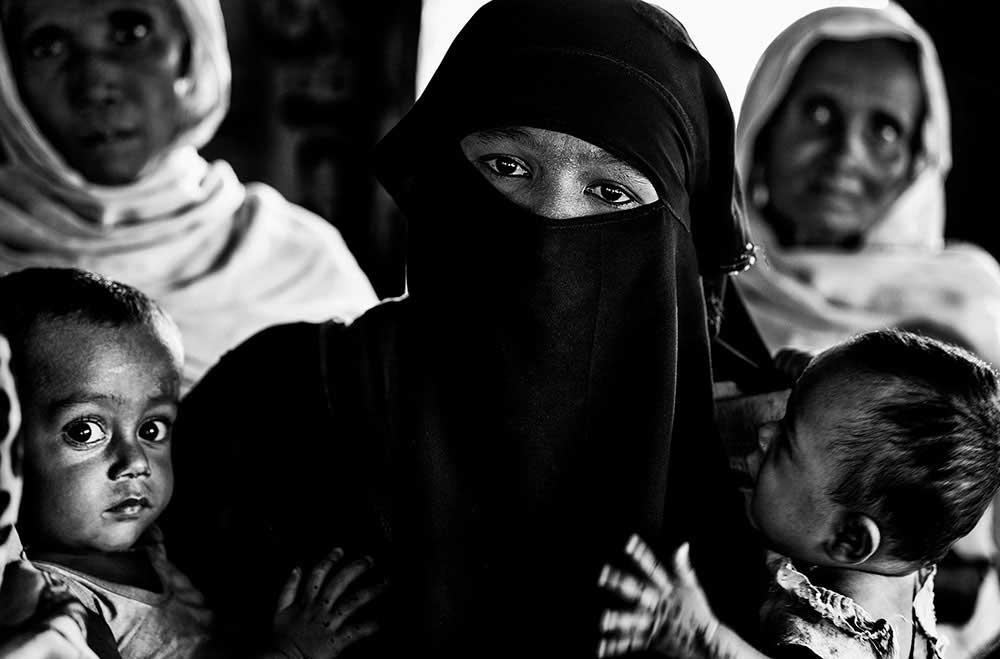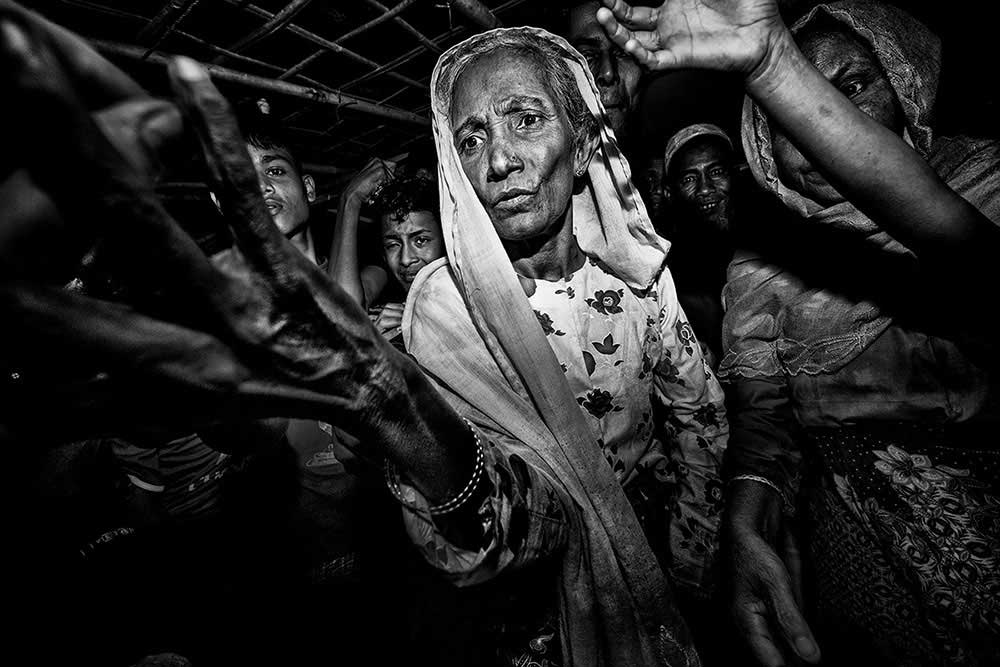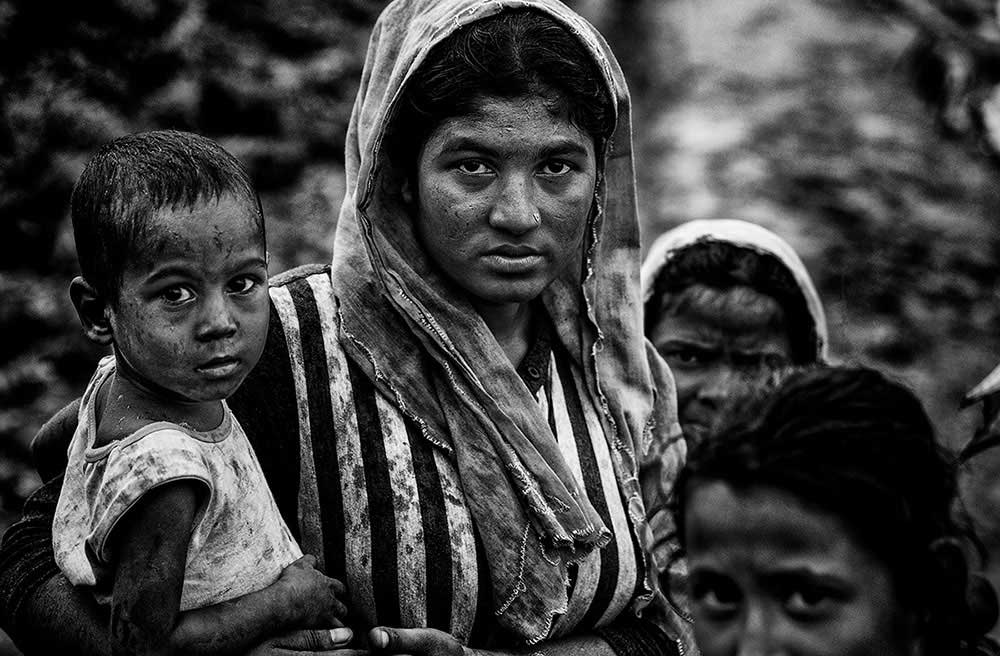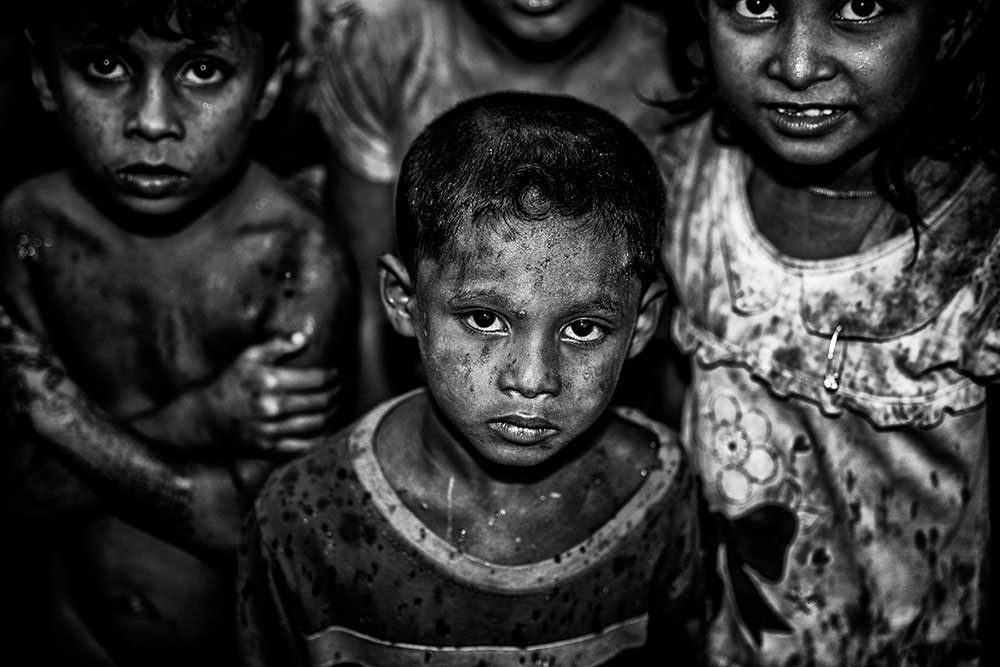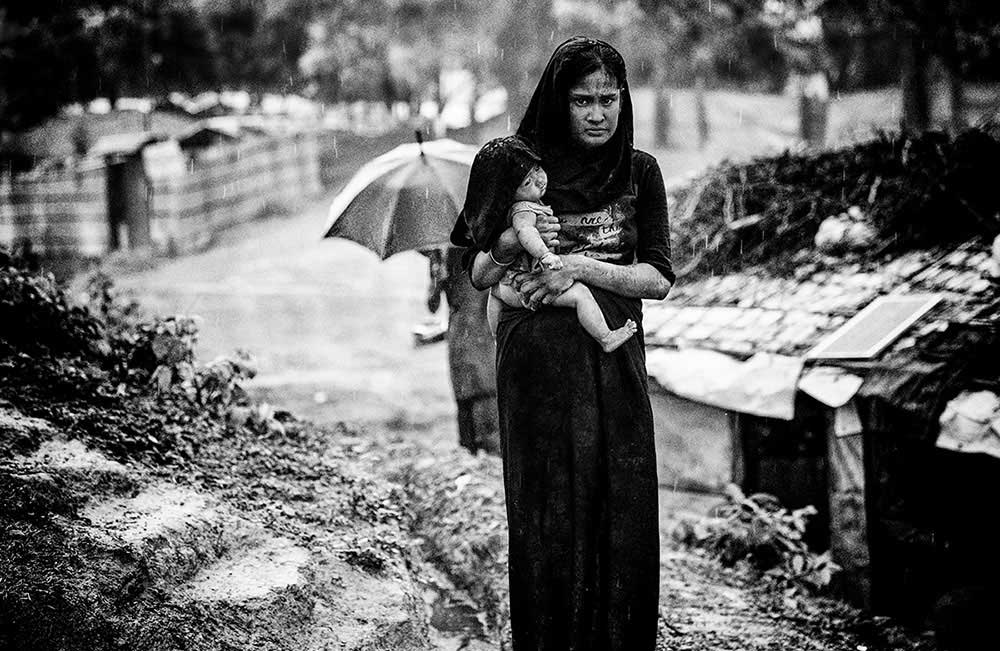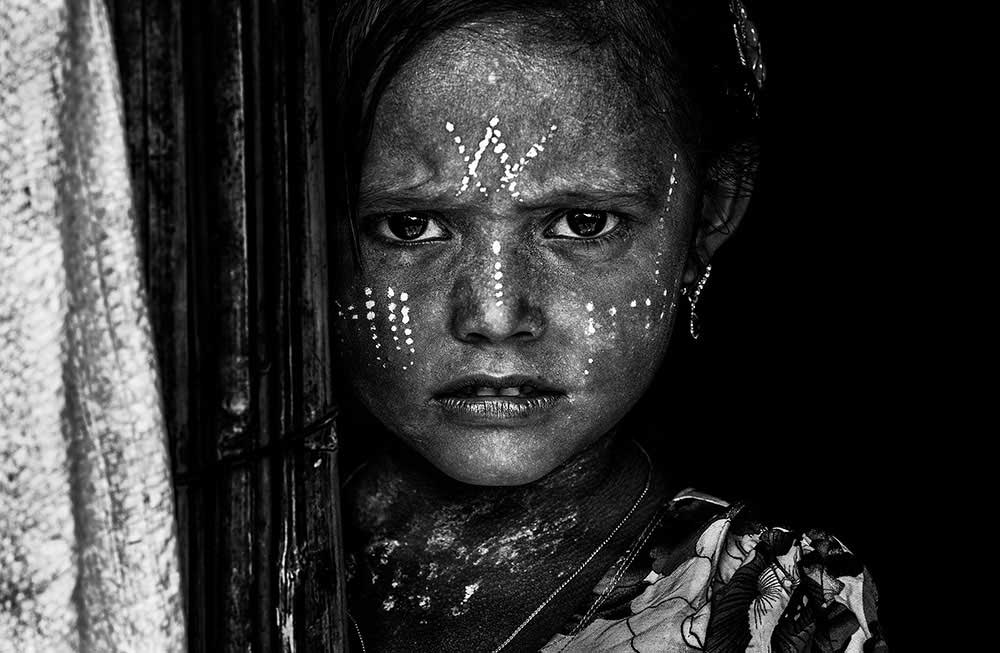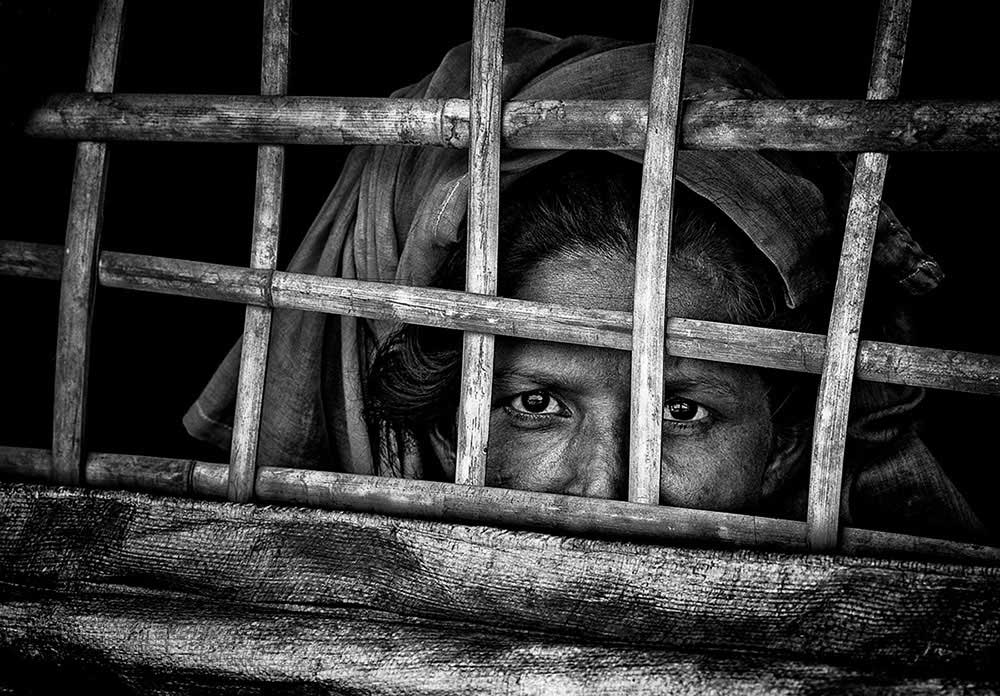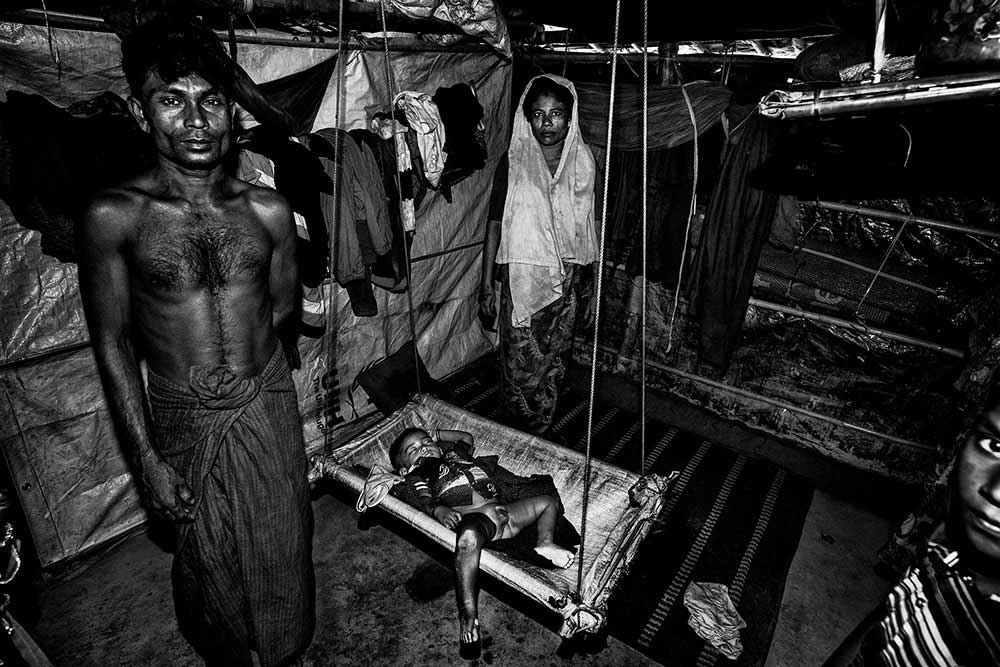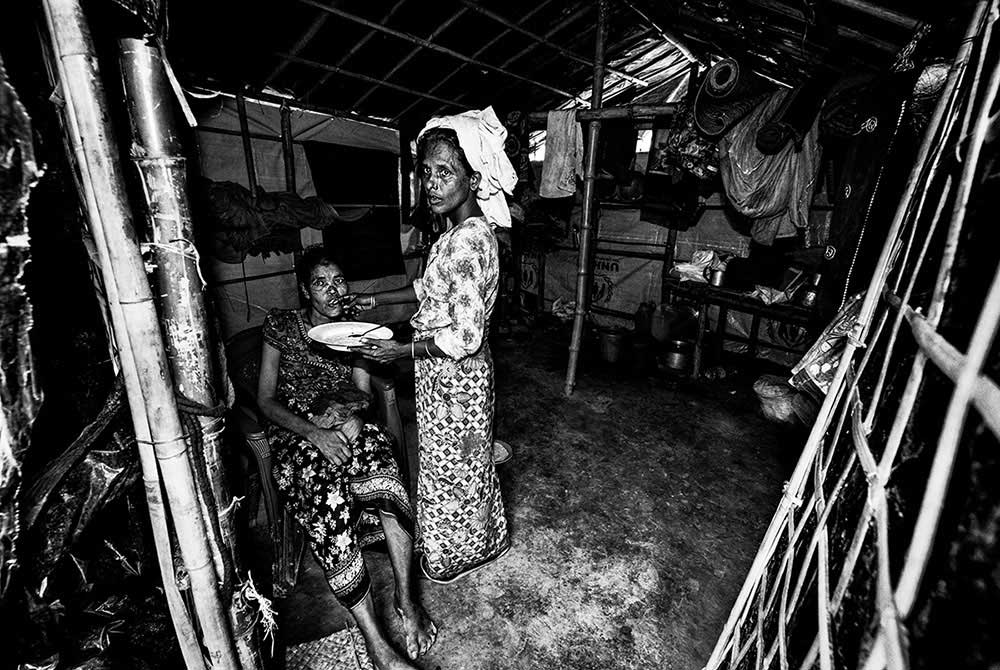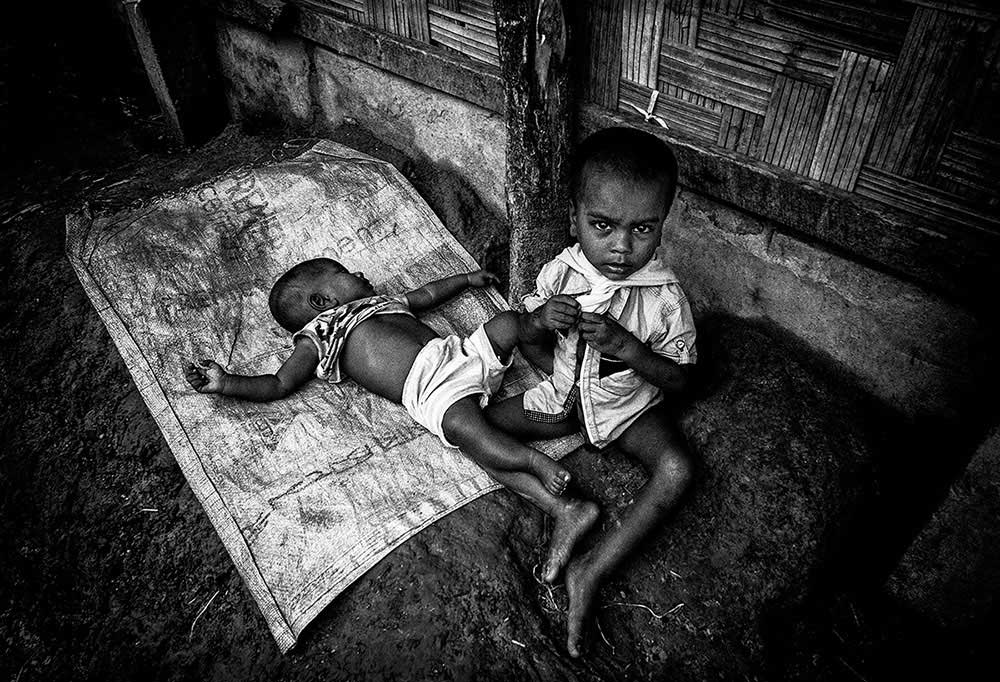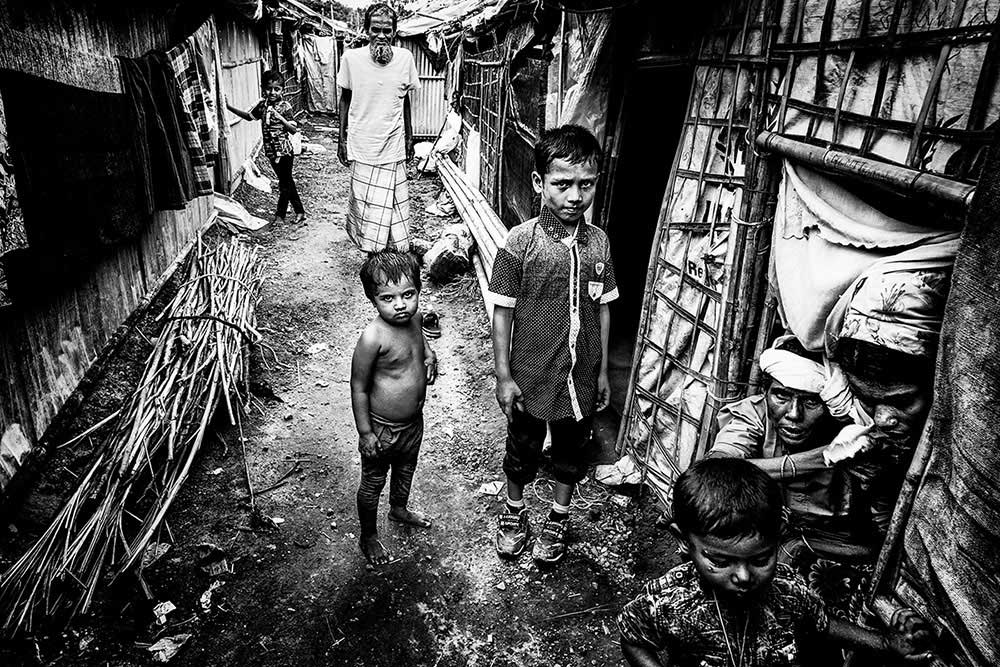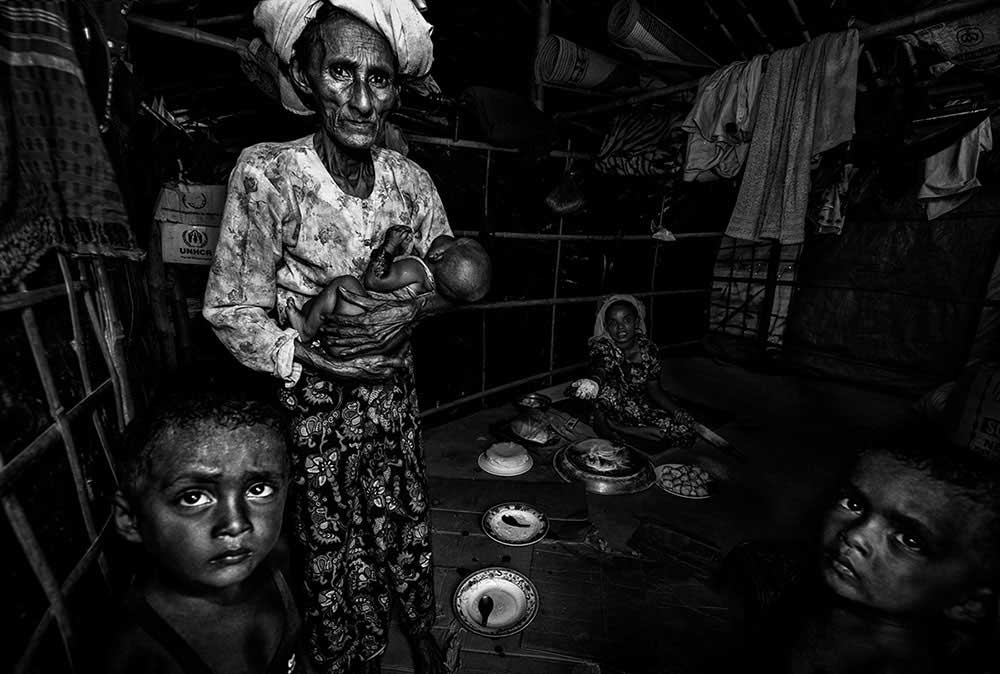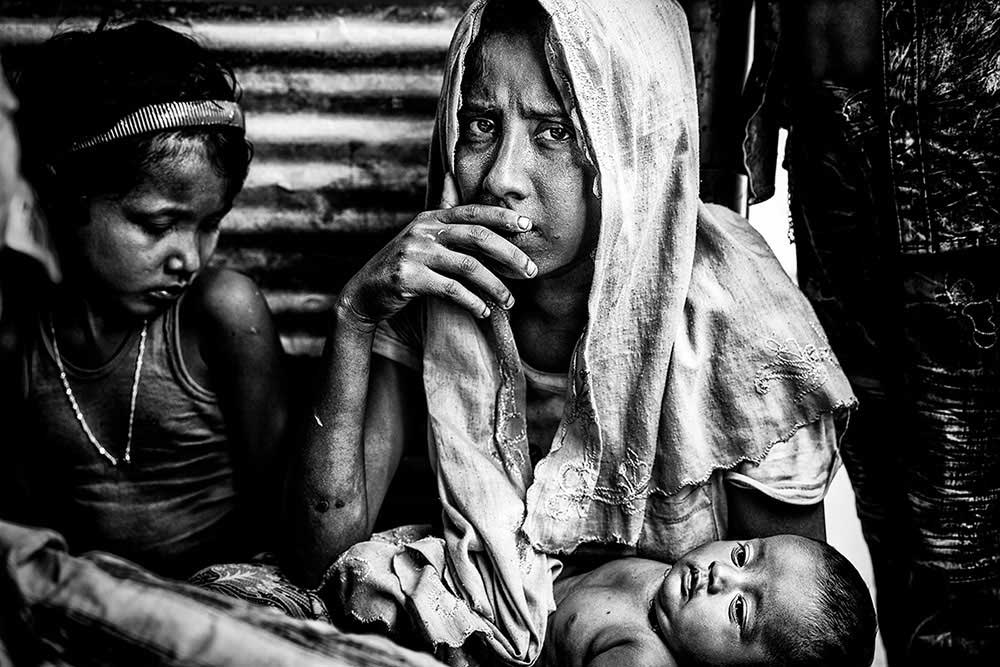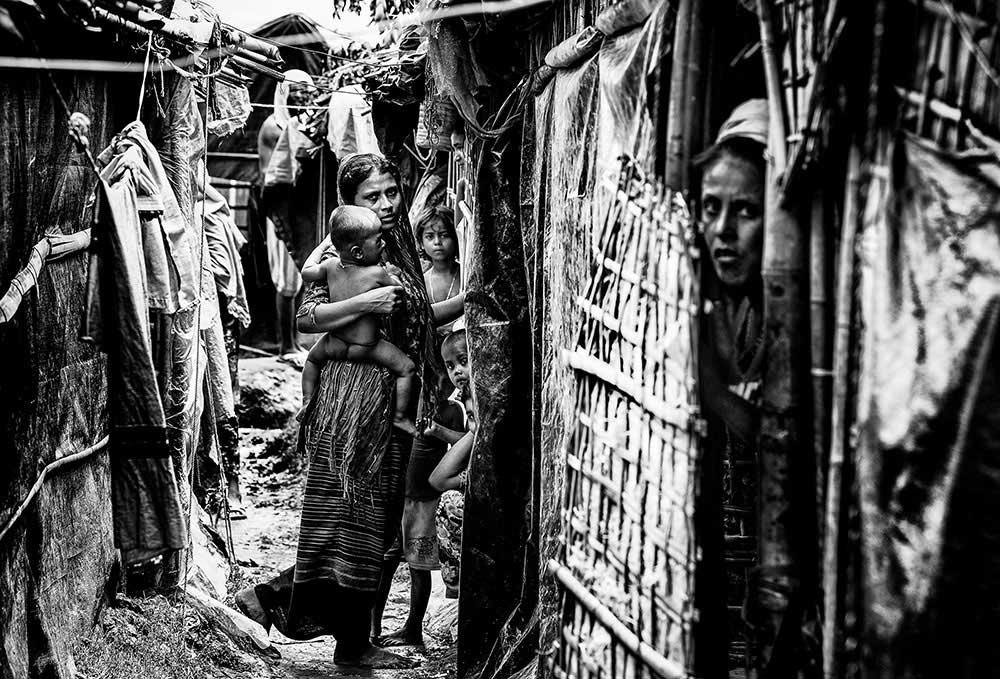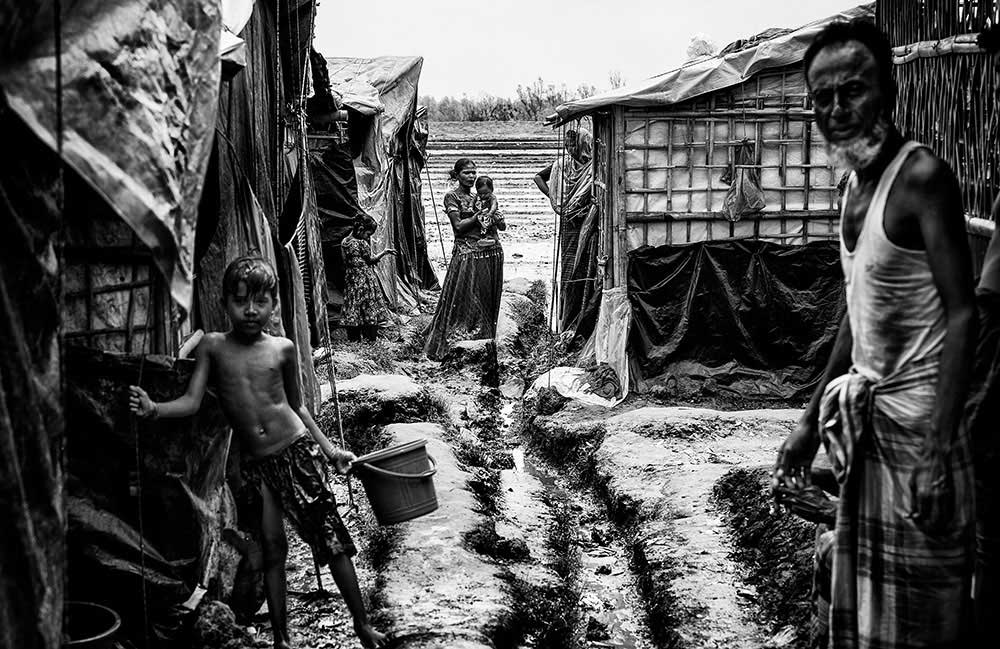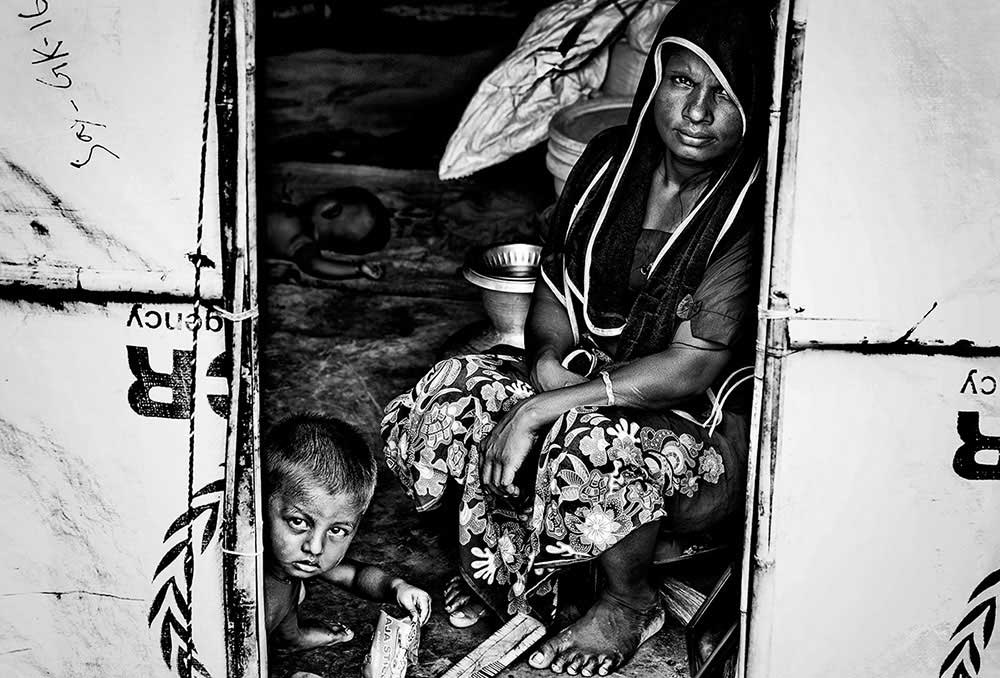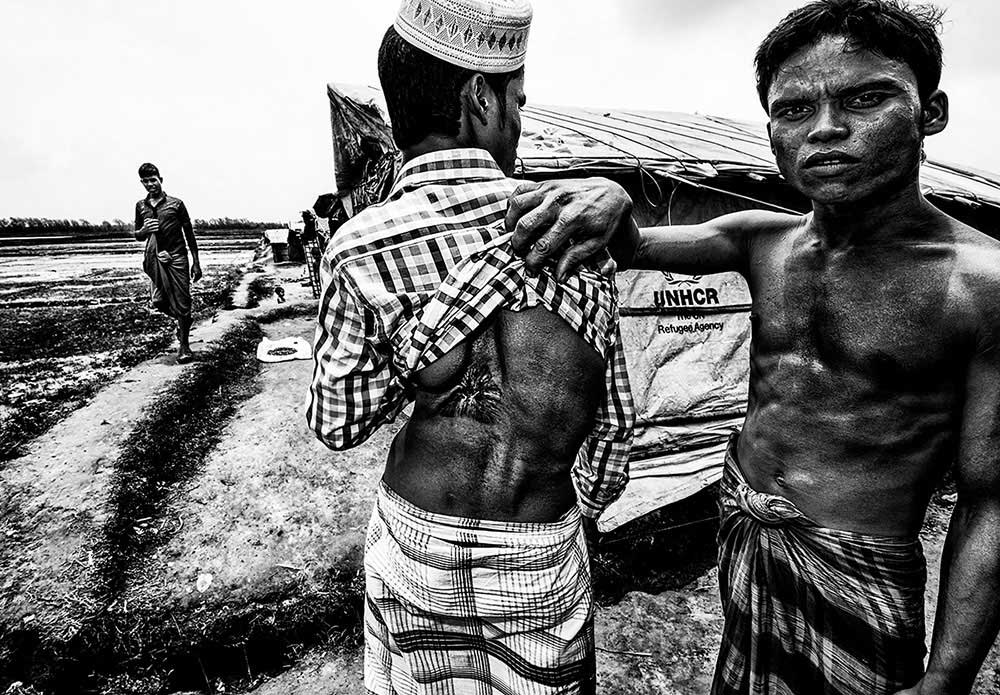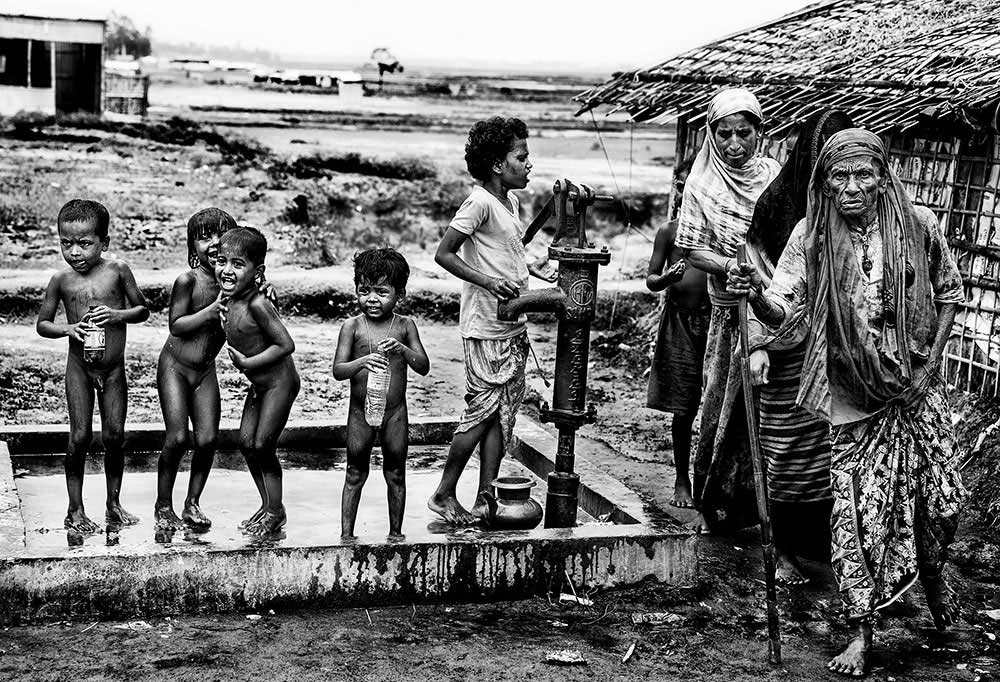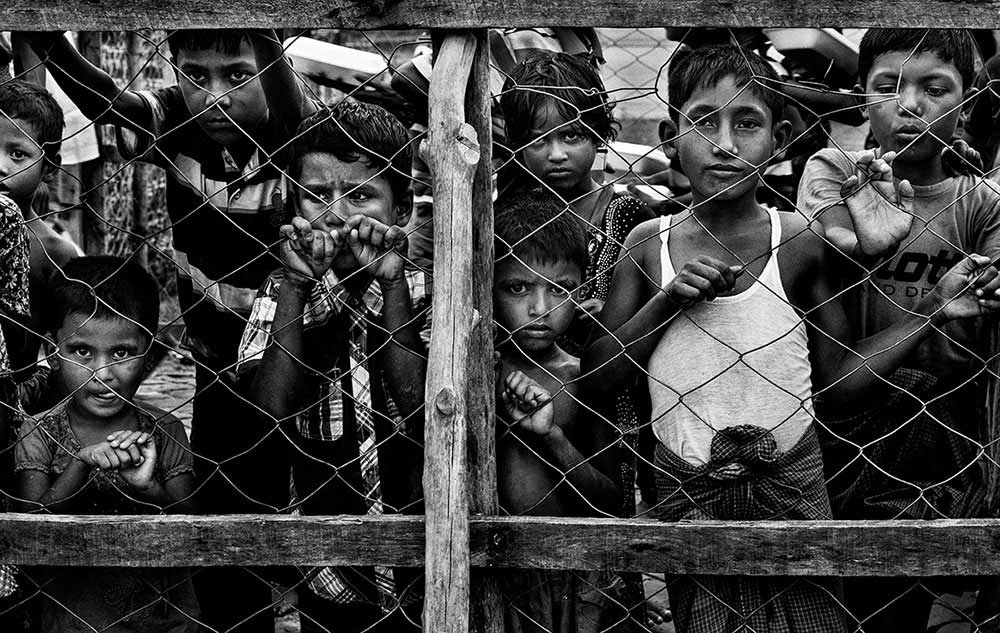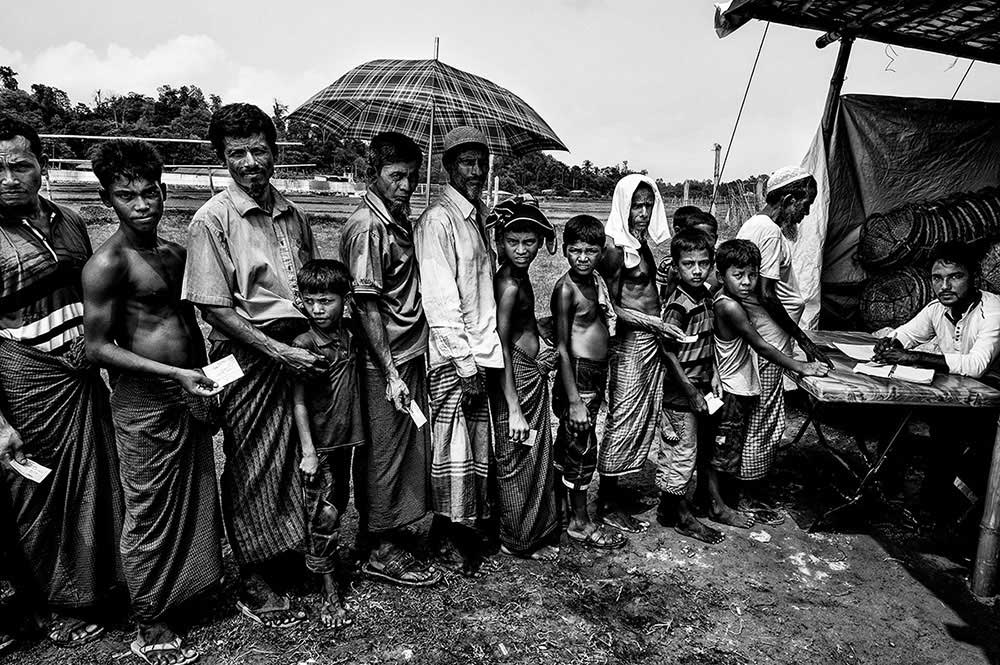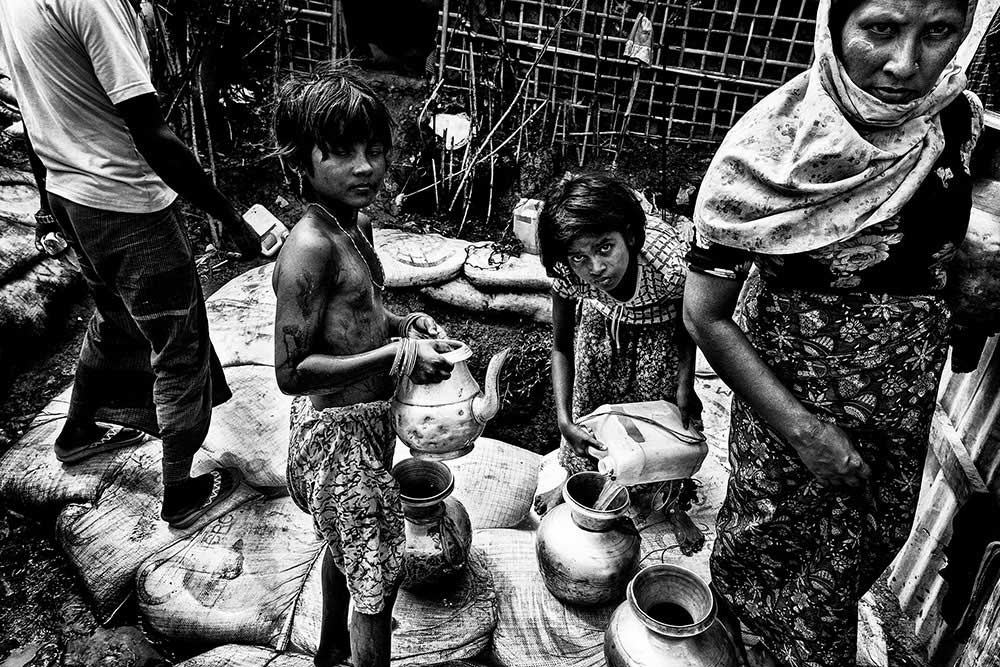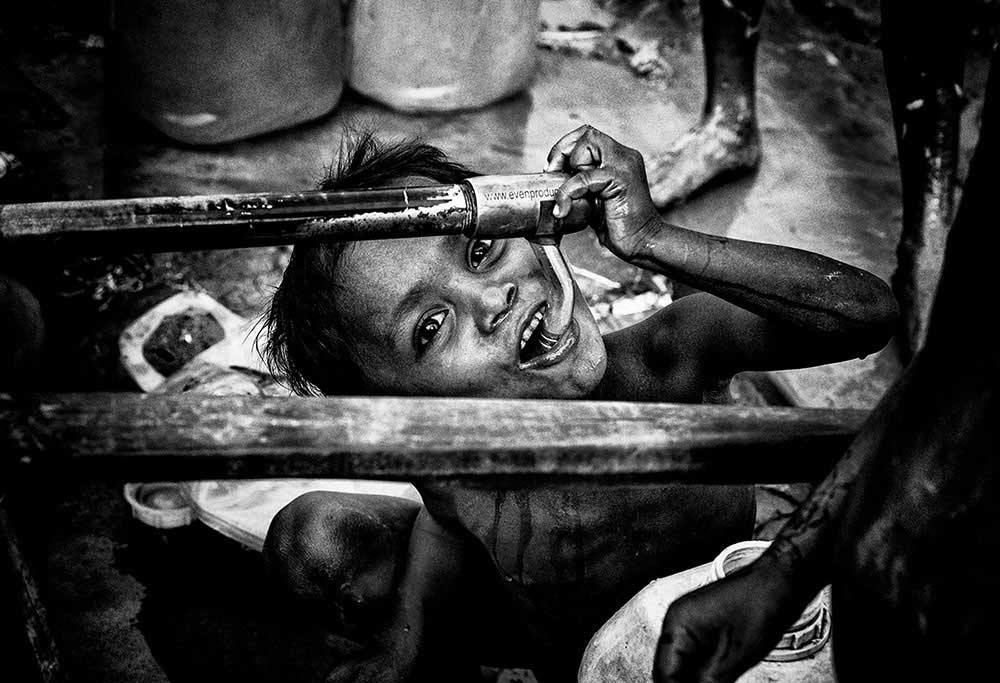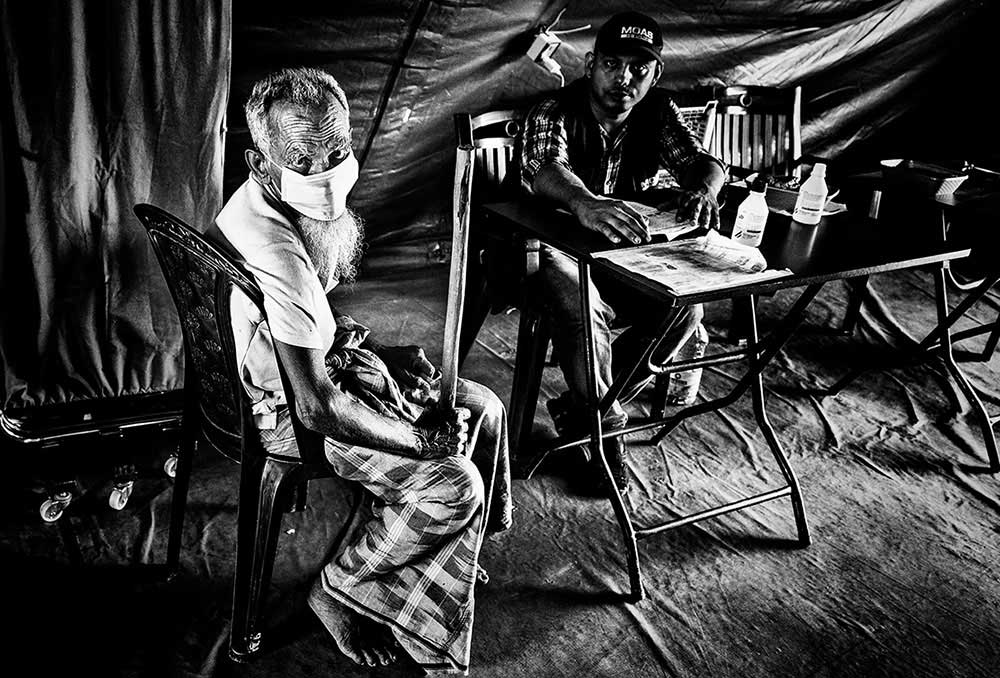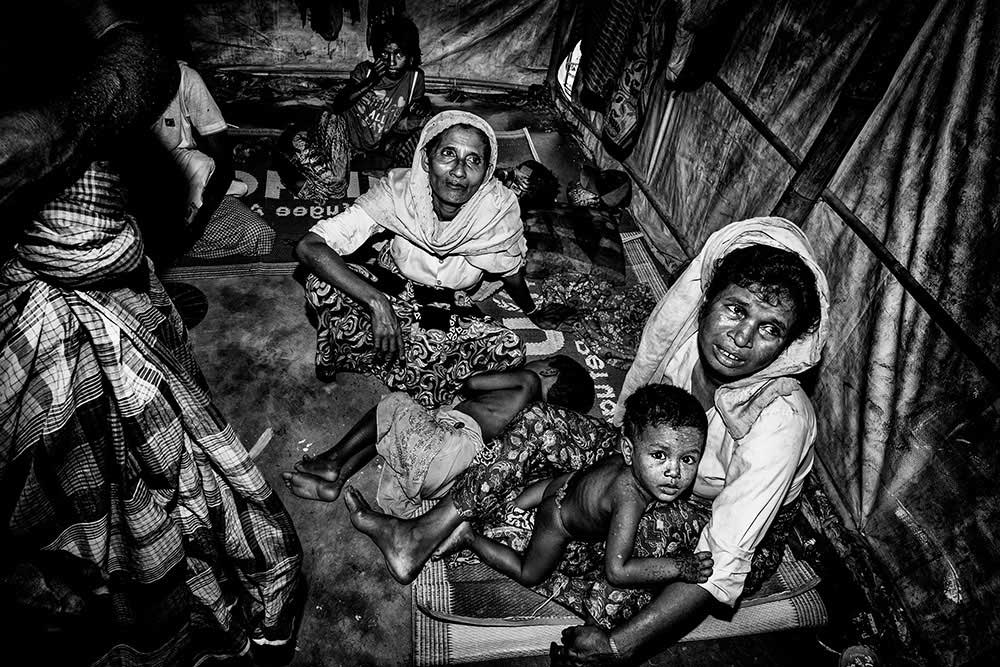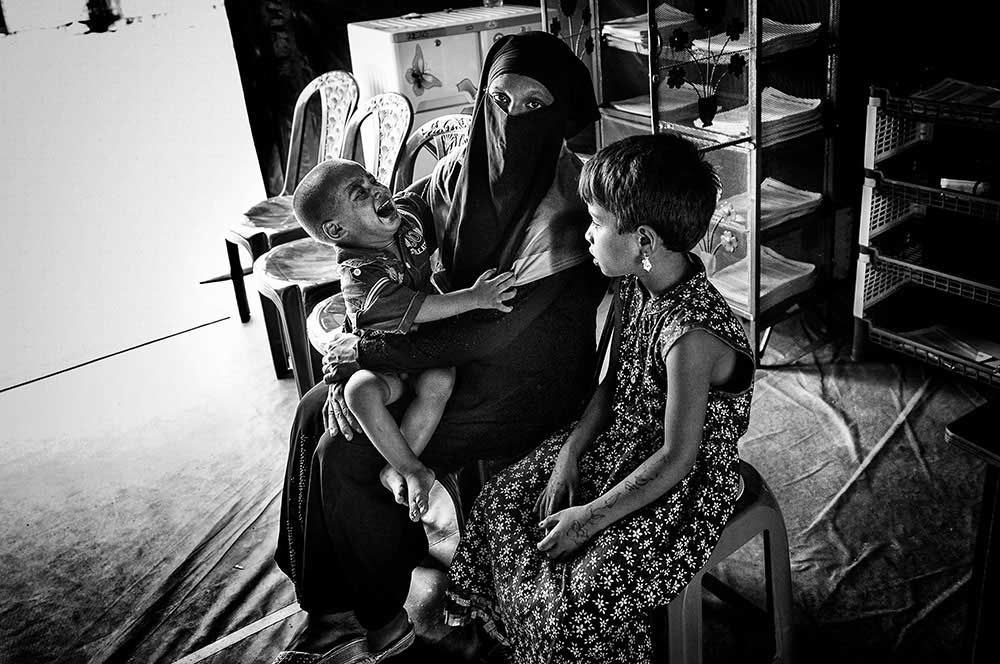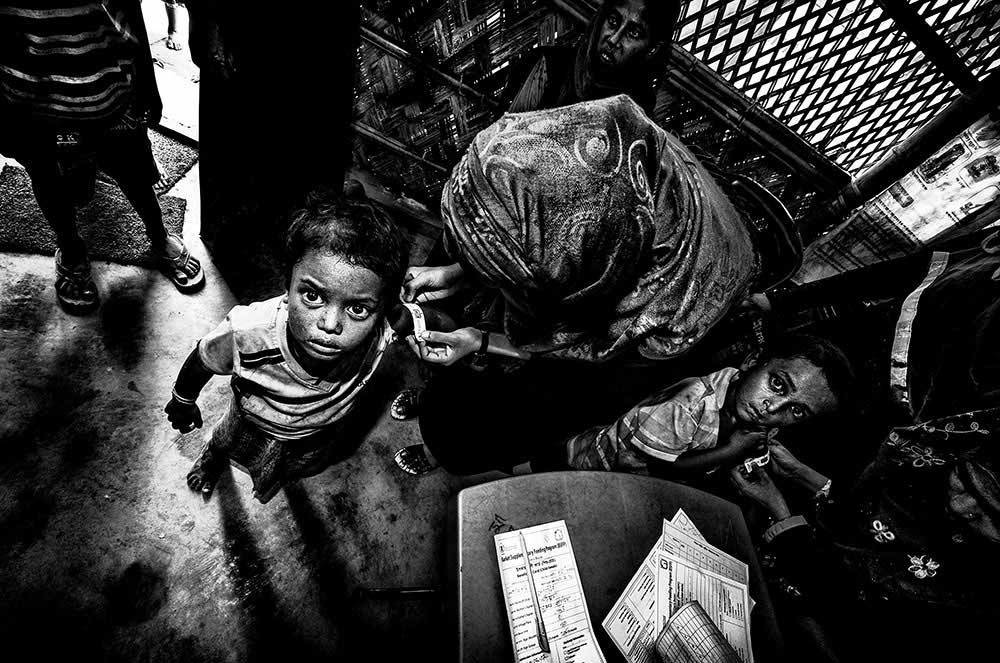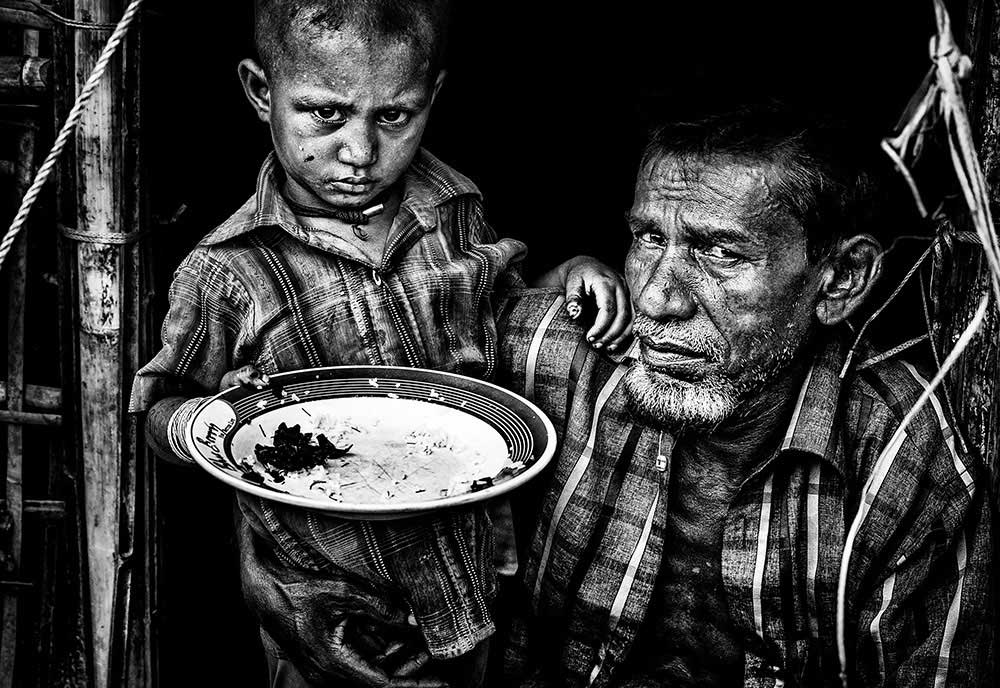 JOXE INAZIO KUESTA SELECTED AND PUBLISHED IN OUR PRINT EDITION 11
JOXE INAZIO KUESTA SELECTED AND PUBLISHED IN OUR PRINT EDITION 11
We arrived at Teknaf, in the district of Cox’s Bazar (Bangladesh) at noon, and that same afternoon we left for the refugee camps.
It was raining, and the moto-rickshaw carrying us broke down halfway. I told Salim, the guide who accompanied me, we could go there next day; but he said no, that the clothes and the rest of the objects we were carrying on must be delivered on the same day, that the next day would not make sense. I asked him why, and he told me the following day was Eid Mubarak, the end of Ramadan, the time when people wore new clothes. As soon as we arrived, we entered a cabin serving as a shop, and after calling those in need, who were mostly older women and widows, we began delivering the gifts. I was impressed with the strength with which they grabbed and held what we were giving them.
Typically, the houses were built with wooden posts, intertwined with reeds and canvas covers. It was the rainy season, and the aisles between the houses rows were a stream of water or an authentic quagmire. Some houses were flooded and with the roofs destroyed. They invited me in to see and photograph the conditions in which they lived. Some houses were clean and neat but without any comfort. In one of them, a woman, surrounded by her relatives, complained of sharp gut pain and cried of helplessness because she had no money to go to the doctor. I remember one couldn’t breathe inside the houses because of the heat and humidity. In one of them, the family’s granny began to fan me when she saw I was breathing hard. The situation overcame me, and I left the house.
They were festive days and the children laughing and screaming had fun oblivious of everything; the boys played with toy guns and the girls, dressed as princesses, swayed in a kind of craft Ferris wheel. This was in sharp contrast with the grief I felt when I heard the widows speak sadly about how they lost their husbands in the shootings with the Burmese army. How to forget the scene of the man showing me the bullet impact on his friend’s back. The father with his son at his house door with the saddest look I have ever seen, or the buckets’ rows to collect tab water the children carried along with the wood for the fire of their homes!
In the most populated areas, there were medical centres called “Aid Stations”, in which the involvement of those working there tried to compensate for the means shortage to attend all the patients who arrived. In one of those areas, I saw how nurses measured the arms contour to the children to verify if their growth was appropriate. And right next to it, a lot of mothers with their children sitting on the floor. I asked what they were doing, and they told me they were waiting for their children receiving their breakfast. It was at that moment that I couldn’t stand it anymore, and turning around so that no one could see me, I started to cry.
In 2017, and according to UN researchers, more than 700,000 Rohingyas were expelled from Myanmar by the national army. In 2019, the leader of the Myanmar Government and Nobel Peace Prize winner Aung San Suu Kyi, defending the Myanmar army, denied in person and before international justice the Rohingya genocide.
In 2018, I had the opportunity to visit the Rohingya refugee camps, and after spending a few days with them, I can only say I will always carry them in my heart.



